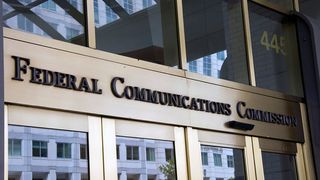INCOMPAS to FCC: Interconnections Need Government Minding

INCOMPAS, whose members include competitive carriers and edge providers, has told the FCC that net neutrality rules apply to interconnections among networks as well as between ISPs and broadband subs.
The FCC's 2015 Open Internet Order applied Open Internet rules to interconnections.
That 2015 order cited its concern that broadband providers might block edge provider access to end users at an earlier point in the transmission pathway—interconnection points—in finding that interconnections were within its authority to regulate, and put them under the Title II common carrier classification along with ISP customer-facing connections.
But FCC Chairman Ajit Pai is expected to circulate an order at the end of this week un-classifying those as under Title II. The proposal, which the FCC approved back in May, suggesting the FCC would be interconnections to their previous state of not being included in whatever network neutrality regime applies to ISPs, though INCOMPAS challenges that characterization.
Netflix had claimed back in 2013 that ISPs were anticompetitively creating congestion at interconnection points, while ISPs countered that transit providers and Netflix (all INCOMPAS members) were creating that congestion as a way to prod ISPs into installing Netflix equipment in their systems.
There have long been rumblings, sometimes not so quietly in the case of Comcast, alleging Netflix intentionally congested traffic to wired ISPs in peering disputes. Netflix has denied it.
INCOMPAS, in a letter to the FCC Monday (Nov. 20), says the evidence falls on the side of Netflix and its members.
Broadcasting & Cable Newsletter
The smarter way to stay on top of broadcasting and cable industry. Sign up below
"If the Commission were to relinquish its oversight of interconnection and internet traffic exchange as contemplated in the NPRM, we expect that large BIAS providers will revert to exercising their incentive to engage in congestion practices at interconnection to force edge and transit providers to pay them which will harm the investment in Internet content and services," INCOMPAS told the FCC.
INCOMPAS says there is also plenty of evidence that ISPs have the ability and the incentive to discriminate against over-the-top traffic, like Netlfix content versus their own video offerings. That, combined with the lack of competition in residential high-speed broadband--the FCC under Pai has suggested it actually is competitive--means the FCC must continue to regulate interconnections.
NCTA flatly told the FCC that its members don't have market power that can be wielded anticompetitively, given all the robust competition, and that "far from seeking to foreclose OVDs or to raise their costs, cable broadband providers have strongly embraced OVD offerings by promoting the value they deliver to broadband subscribers and by integrating such online offerings with their own video services."
While ISPs argued the FCC was breaking new ground, and breaking with precedent, in including interconnections in net neutrality rules back in 2015, INCOMPAS says those interconnections have always been an essential part of access and open internet conversation and concerns.
"Netflix, Cogent, or Level 3 caused (either directly or indirectly) the congestion experienced by the Comcast’s customers between December 2013 and January 2014 and that the Commission has not regulated interconnection practices previously. These claims are contrary to the record and the facts. Instead, the Commission should reiterate that broadband providers have the incentive and ability to harm unaffiliated OVDs and that they have done so in the past," it said."
AT&T told the FCC in its own letter that INCOMPAS was off base and that interconnection fees are competitively trivial, can't be used to harm competition, "simply reflect the dynamics of a double-sided market, [and] exert downward pressure on consumer prices."
Contributing editor John Eggerton has been an editor and/or writer on media regulation, legislation and policy for over four decades, including covering the FCC, FTC, Congress, the major media trade associations, and the federal courts. In addition to Multichannel News and Broadcasting + Cable, his work has appeared in Radio World, TV Technology, TV Fax, This Week in Consumer Electronics, Variety and the Encyclopedia Britannica.

